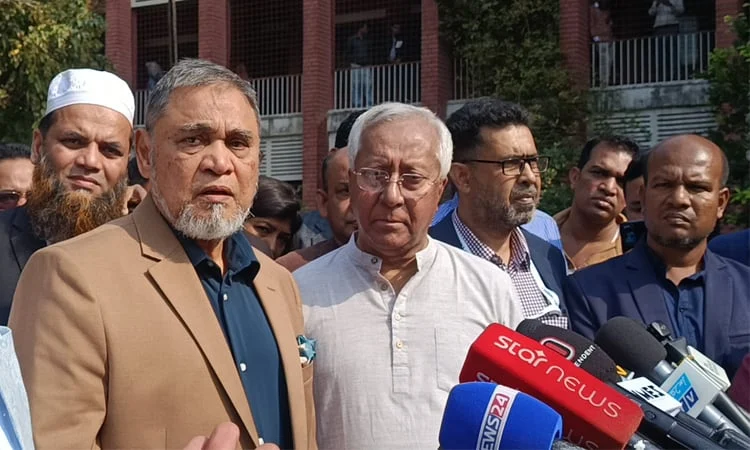

Chief Election Commissioner (CEC) A M M Nasir Uddin today said the schedules for the 13th National Parliamentary Election and referendum will be announced in the second week of December.
"We hope the schedule for the national parliamentary election will be declared in the second week of December. Once the schedule is announced, you will know the dates," he told media after inspecting mock voting organized by the Election Commission (EC) at Sher-e-Bangla Nagar Girls' High School in the capital.
Four Election Commissioners, Senior Secretary of the EC Secretariat, and European Union (EU) Ambassador to Bangladesh Michael Miller were present at the time.
The CEC said, "We have pledged to present the nation with a good, acceptable and participatory election.
The purpose of today's mock voting is to test the promises we made-what an ideal polling environment should look like."
He added, "We observed how voters queue, how presiding and polling officers sit and perform their duties, and the role journalists may have. Today, we wanted to see everything practically through the voting exercise."
The CEC said that the EC aims to deliver an election as transparent as today's mock voting. "The law and order situation will gradually improve, and the overall environment will remain favourable for the polls," he added.
He added, "Here, voters stood in line and entered the polling station one by one. Then they show the slip. The polling officer calls out.
Then the assistant presiding officer gives the ballot paper. Then they enter the private room and vote and put it in the box. Many people are not familiar with this procedure."
The CEC noted that many first-time voters, especially those who became voters in the last 15 years, have never experienced voting in person.
"Through this exercise, they are gaining practical experience. For us, it also allows a real-time assessment of the polling environment, since we usually conduct voting from 8am to 4pm."
On the referendum, the CEC said, "Conducting the referendum alongside the national election is an additional responsibility. We have to hold this referendum."
He went on, "If both must be held together, we must manage time efficiently. Based on today's evaluation, we will determine whether 42,500-plus polling centres are sufficient, or if additional centres or booths are needed.
"A new booth requires more staff and additional logistical arrangements. We want to move forward based on reality, not assumptions. After today's real-time assessment, we will proceed with the next round of planning," he added.
The CEC said the EC is broadly prepared. There will be no difficulty. Inshallah, we will uphold the promise we made to the nation. We want to conduct everything transparently--just as today's mock voting took place."
Regarding referendum publicity, he said widespread campaigning has not yet begun. "The government and the EC will jointly conduct extensive campaigns.... The ordinance and the law have just been issued, authorizing the EC to hold the referendum."
He added, "We have already begun working seriously. The information ministry and the cultural ministry have been tasked with carrying out the campaign, and we will work with them."
"The referendum will have only 'Yes' and 'No' options, as agreed upon by the political parties. The government enacted the law, and we are preparing for the 'Yes-No' vote in accordance with that law," the CEC added.
Addressing journalists, the CEC said, "You too have responsibilities as citizens of this country. It is our joint responsibility to campaign.
You also have a responsibility to campaign on the issues that are coming up in the referendum. You will see a massive campaign from our side."
On the law and order situation, he said, "The law and order situation has improved significantly. We are continuously coordinating with the law enforcement agencies, and everyone is undergoing training."
"We will ensure an overall environment conducive to polling. The situation will continue to improve," he added.
